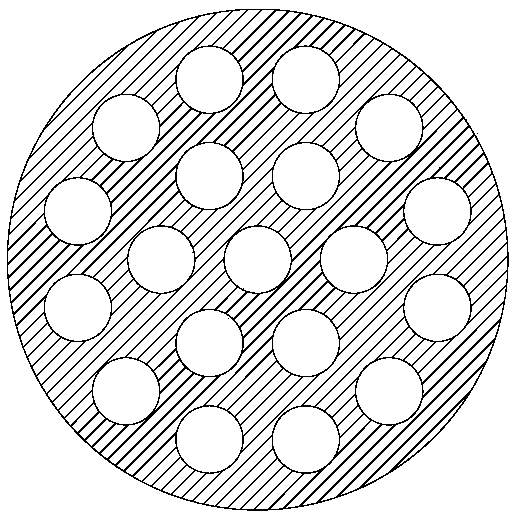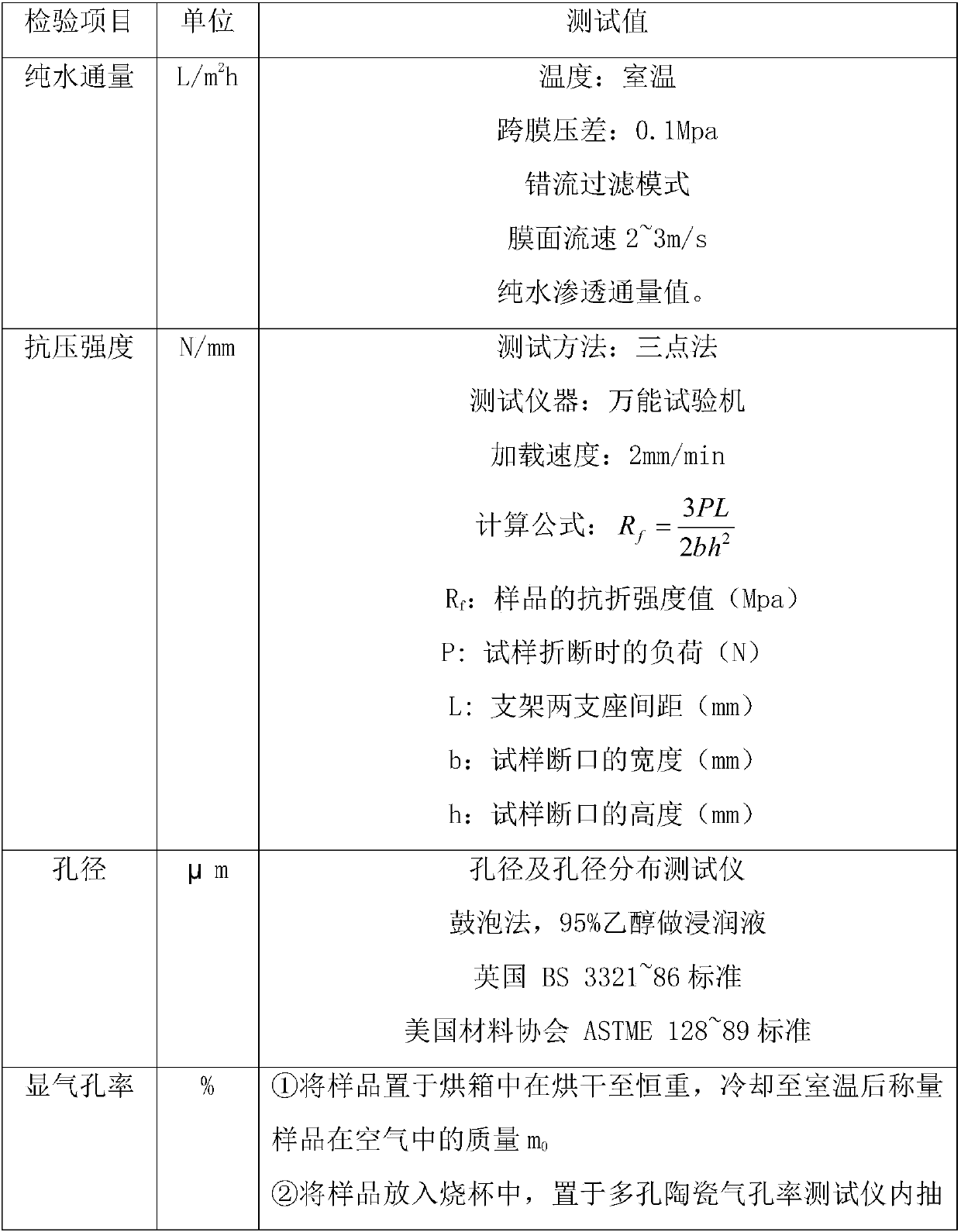Preparation method of low-temperature sintered acid-and-alkali-resistant porous silicon carbide ceramic supporting body
A technology of porous silicon carbide and low-temperature sintering, which is applied in the field of inorganic membrane separation materials and inorganic porous materials. It can solve the problems of unusable silicon carbide filter tubes, recovery of the flux of washing filter tubes, and high equipment prices, and achieve good hydrophilicity and performance. Effects of anti-pollution, low cost, low production cost and low investment cost
- Summary
- Abstract
- Description
- Claims
- Application Information
AI Technical Summary
Problems solved by technology
Method used
Image
Examples
Embodiment 1
[0033]A method for preparing a low-temperature sintered acid and alkali-resistant porous silicon carbide ceramic support body, which sequentially comprises four steps: (1) mud preparation; (2) extrusion molding; (3) low-temperature drying; (4) high-temperature sintering. Wherein, the raw materials used in step (1) are silicon carbide powder, sintering aid, forming machine, pore forming agent, lubricant and solvent. Because the raw material belongs to oily formula and has good plasticity, the porosity of the prepared porous silicon carbide ceramic support body is controllable, and the maximum porosity can reach 55%. Therefore, the porous silicon carbide ceramic support is composed of three-dimensional gaps formed between silicon carbide particles, which ensures the diffusion and flow of the filter medium in a wider space, reduces the filtration resistance, and can significantly improve the recoil cleaning effect, thereby increasing the filtration flux and stability. sex.
Embodiment 2
[0035] Blend 45 μm silicon carbide particles, sintering aids, carboxymethyl cellulose, graphite powder, and tung oil with water and ethanol (V / V=3:2) in a mass percentage ratio of 85:5:3.0:5.5:1.5 In the solvent, the mixed solvent accounts for 24wt% of the total amount. Dry mix in a strong mixer for 30 minutes, add solvent and wet mix for 120 minutes, and then vacuum mud once at -0.95MPa, pack the refined mud in a vacuum bag, and store it at room temperature 24 hours, before opening the tube, practice the mud again in vacuum. The extruded mud is a tubular porous silicon carbide ceramic support mud with an outer diameter of 32mm, a channel diameter of 4.2mm, 19 holes, and a length of 1016mm. The extrusion pressure is 10Mpa and the extrusion speed is 20mm / s. The mud is dried indoors for 24 hours, then transferred to an oven, heated from room temperature to 50°C with a heating rate of 1°C / min, and kept for 6 hours; from 50°C to 80°C, with a heating rate of 1°C / min, kept for 6 hou...
Embodiment 3
[0037] Blend 62 μm silicon carbide particles, sintering aids, carboxymethyl cellulose, graphite powder, and tung oil with water and ethanol (V / V=3:2) in a mass percentage ratio of 82:8:3.5:5.0:1.5 In the solvent, the mixed solvent accounts for 21wt% of the total amount. Dry-mix in a strong mixer for 30 minutes, add solvent and wet-mix for 120 minutes, and then vacuum mud once at -0.95MPa, pack the refined mud in a vacuum bag, and store it at room temperature 24 hours, before opening the tube, practice the mud again in vacuum. The extruded mud is a tubular porous silicon carbide ceramic support body with an outer diameter of 32mm, a channel diameter of 4.2mm, 19 holes, and a length of 1016mm. The extrusion pressure is 8.5Mpa and the extrusion speed is 30mm / s. The mud is dried indoors for 24 hours, then transferred to an oven, heated from room temperature to 50°C at a heating rate of 2°C / min, and kept for 5 hours; from 50°C to 80°C, with a heating rate of 2°C / min, kept for 5 hou...
PUM
| Property | Measurement | Unit |
|---|---|---|
| particle diameter | aaaaa | aaaaa |
| particle diameter | aaaaa | aaaaa |
Abstract
Description
Claims
Application Information
 Login to View More
Login to View More - R&D
- Intellectual Property
- Life Sciences
- Materials
- Tech Scout
- Unparalleled Data Quality
- Higher Quality Content
- 60% Fewer Hallucinations
Browse by: Latest US Patents, China's latest patents, Technical Efficacy Thesaurus, Application Domain, Technology Topic, Popular Technical Reports.
© 2025 PatSnap. All rights reserved.Legal|Privacy policy|Modern Slavery Act Transparency Statement|Sitemap|About US| Contact US: help@patsnap.com



